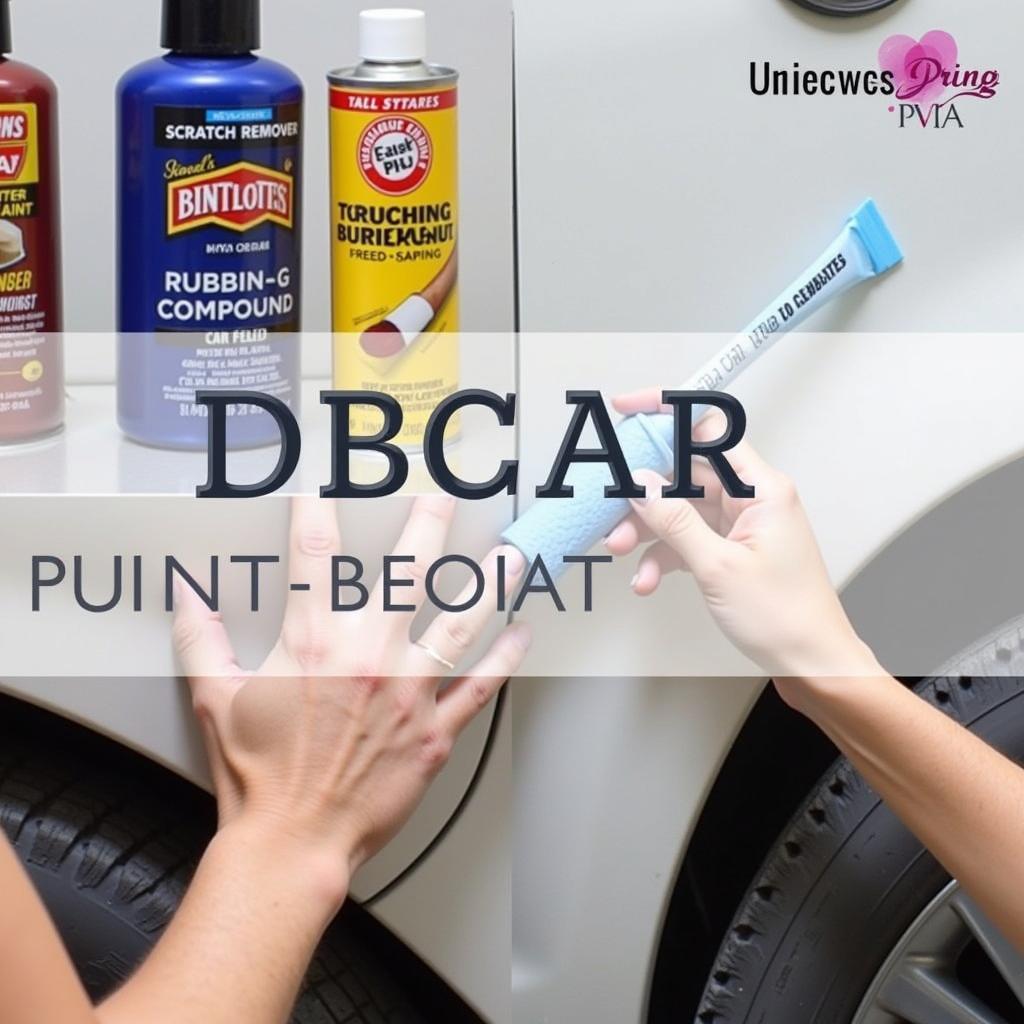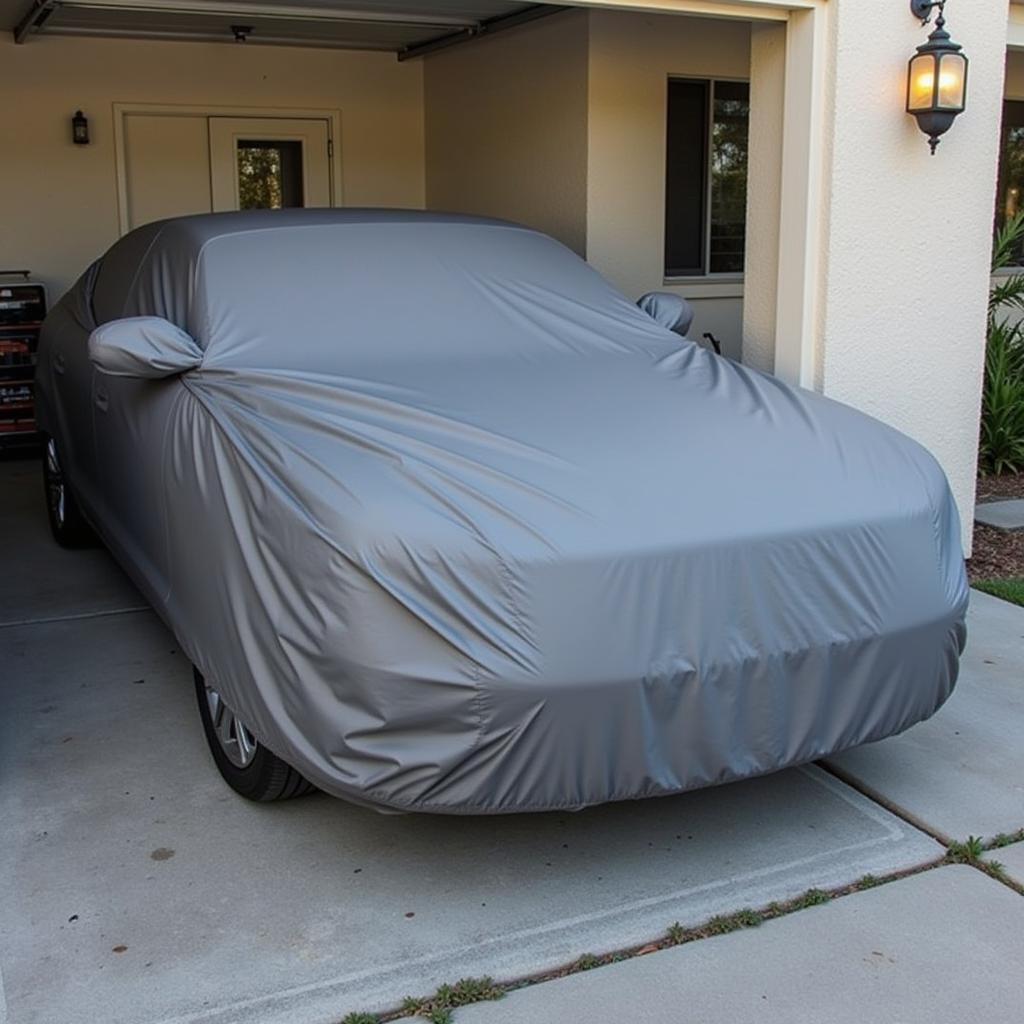Fixing paint issues on your car can seem daunting, but with the right knowledge and approach, you can restore your car’s finish to its former glory. This guide will walk you through various car paint problems, from minor scratches to more serious damage, and provide solutions for fixing paint issues on car yourself or with professional help.
Identifying Common Car Paint Problems
Before you can Fix Paint Issues On Car, it’s crucial to identify the specific problem. Is it a minor scratch, a deep gouge, clear coat peeling, or perhaps fading paint? Accurate diagnosis is the first step towards effective repair.
- Scratches: These can range from light surface scratches to deeper ones that penetrate the color coat.
- Chips: Small pieces of paint chipped off, often caused by rocks or road debris.
- Clear Coat Peeling: The clear coat, designed to protect the paint, begins to peel or flake off.
- Fading: The paint loses its vibrancy and luster due to sun exposure.
- Oxidation: A chemical reaction that dulls the paint and can create a chalky appearance.
After identifying the issue, you can choose the appropriate repair method. Some minor scratches can be fixed with a simple DIY solution, while more serious problems may require professional attention. Let’s explore the different ways to fix paint issues on car.
DIY Solutions for Minor Paint Issues
Minor scratches and scuffs can often be addressed with DIY techniques. These methods can save you money and time, and can be surprisingly effective.
- Touch-up Paint: For small chips and scratches, touch-up paint is a quick and easy fix. best way to fix a scratch on my car offers great tips for this.
- Scratch Remover: These products can effectively remove light scratches and swirl marks. Be sure to follow the product instructions carefully.
- Rubbing Compound: This abrasive compound can help remove deeper scratches, but requires careful application to avoid damaging the surrounding paint.
 DIY Car Paint Repair
DIY Car Paint Repair
Remember, these DIY solutions are best for minor paint imperfections. For more significant damage, professional help is usually necessary.
When to Seek Professional Help
While DIY fixes can be effective for minor problems, some paint issues require professional expertise. Deep scratches, extensive clear coat peeling, or significant fading often necessitate professional repair.
- Deep Scratches and Gouges: These often require sanding, priming, and repainting.
- Extensive Clear Coat Peeling: This usually requires complete removal of the old clear coat and application of a new layer.
- Fading and Oxidation: Professionals can use specialized techniques like color sanding and polishing to restore the paint’s original shine.
Knowing when to seek professional help is essential. A botched DIY repair can sometimes create more problems and increase the cost of eventual professional repair. estimate on fixing my car provides helpful information on getting repair estimates.
Preventing Future Paint Issues
Protecting your car’s paint from future damage is just as important as fixing existing issues. Here are some preventative measures:
- Regular Washing and Waxing: This helps protect the paint from environmental contaminants and UV rays.
- Parking in the Shade: Avoid prolonged sun exposure to prevent fading.
- Using a Car Cover: This provides a physical barrier against scratches, chips, and UV rays.
“Preventing paint damage is often easier and more cost-effective than repairing it,” advises John Miller, a seasoned automotive technician at Miller’s Auto Repair. “Regular maintenance and proactive protection can save you a lot of hassle in the long run.”
 Preventing Car Paint Damage
Preventing Car Paint Damage
Fix Car Paint Color Matching
Ensuring the correct color match is critical when fixing paint issues, especially when using touch-up paint or repainting a section of your car. fix car paint color can guide you through the process of finding the perfect match for your car’s paint.
Fixing Hail Damage
Hail can wreak havoc on your car’s paint, leaving dents and chipped paint. do hail damaged cars really get fixed explores the repair process for hail-damaged vehicles. It’s often a complex process best handled by professionals.
Dealing with Bubbling Clear Coat
Bubbling clear coat is a common issue often caused by moisture trapped beneath the clear coat. how to fix bubbling clear coat on car details the steps involved in fixing this problem.
Conclusion
Fixing paint issues on car requires careful assessment and the right approach. From DIY solutions for minor scratches to professional repairs for more serious damage, understanding the different methods and when to use them is crucial for restoring your car’s appearance and protecting its value. Don’t hesitate to contact us at AutoTipPro for any questions or assistance. You can reach us at +1 (641) 206-8880 or visit our office at 500 N St Mary’s St, San Antonio, TX 78205, United States.




Leave a Reply